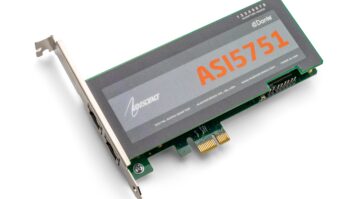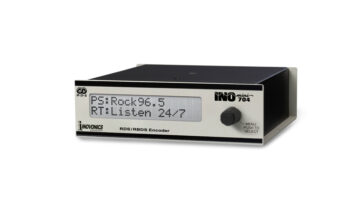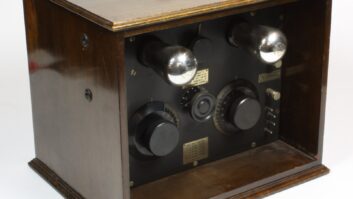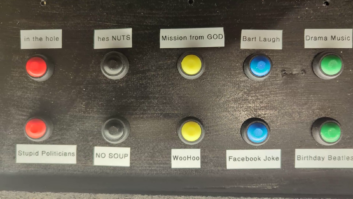The Company’s PR-30 and PR-40 Cardioid Mics Offer Frequency Response, Off-Axis Noise Rejection
Bob Heil is a man whose life has revolved around sound from many different approaches.
His professional career has evolved from that of a pipe organist and a pioneer in sound systems for touring performers, to developing microphones and headsets for amateur radio.
Product CapsuleTHUMBS UP
Great value
Superb ambient noise rejection
Very well constructed
Transparent response
THUMBS DOWN:
Internal popscreen helpful but a little insufficient
No roll-off switch
PRICE: Heil PR-30 List Price $199, Heil PR-40 Introductory Price $209
CONTACT: Heil Sound in Illinois at (618) 257-3000 or visit www.heilsound.com
Heil’s microphones and headsets for that market have been in production for over 20 years and have received accolades in ham publications such as QST. He seems to take the time to approach his designs from a “consumer” standpoint, and that has helped greatly to establish his reputation.
His experience on the road touring with prominent and professional acts allowed Heil to recognize what he felt was missing from the available “tried and true” arsenal of microphones. He says he set out to utilize the lessons learned in his communication mic designs and live stage experience to create a line of dynamic microphones that would be economically and sonically superior to the conventional offerings in a comparable price range.
Dynamic range
The Heil PR-30 mic is a dynamic cardioid microphone employing a neodymium “supermagnet” material structure in a steel encasement. The literature claims a frequency response of 40 Hz to 18 kHz. A key feature to this mic is a 1.5-inch diameter dynamic element that exhibits a warm and rich response.
As a professional studio dynamic microphone, the PR-30 is among sparse company in the “street price” range of less than $300. One thing that surprised me in taking this mic out of the box was its weight. At 15 ounces it feels lighter than it looks.
It would be unlikely that this mic would suffer from “droop” while seated in its supplied SM-3 mount, although I would suggest using the optional SM-2 shock mount for optimum isolation from mechanical vibration.
The finish is an attractive anodized champagne matte. Due to its dynamic range, I can see this mic being employed in numerous applications, from the miking of guitars, kick drums, brass, amplifiers and acoustic instrumentation to, of course, the human voice.
When set out at a distance of a few inches from the source (on axis), the PR-30 fulfills most of the manufacturer’s claims – low distortion, high dynamic range and, most of all, a natural and clear response.
It is for a transparent capturing of the human voice that the PR-30 was designed, and this is where the Heil design team’s experience with communication mic construction and experimentation with newer materials becomes apparent. I did several test recordings with this mic both in a small home recording studio and in a more demanding production studio environment, and found the PR-30 suited to both.
On axis, the PR-30’s response was smooth and certainly competitive with other dynamic microphones costing far more. I did start to notice a small amount of coloration of the sound as I moved to the 45 degree and 90 degree points, more so than with a more expensive mic. Without using an external pop filter, I noticed this mic’s proclivity to popping a bit more than I expected, as Heil utilizes an internal double windscreen.
I’m not sure I would abandon the external pop filter altogether.
The proximity effect of the PR-30 also seemed to be slightly more pronounced than that of a costlier reference, but it was also a smoother proximity curve as I moved in on it; not rising up abruptly at a given point.
Like with any dynamic mic, I had to maintain a certain distance from the mic to avoid this, but also could “work” the mic to utilize the proximity effect if I so desired. I think this could be an advantage to announcers who are used to this augmentation of their voice’s response. Note that there is no roll-off switch to compensate for this.
I mentioned earlier the optional SM-2 mount because the PR-30 tends to transmit some mechanical vibrations from the case and cable to its element. This is not a microphone designed to be hand-held.
With that said, one feature about the PR-30 was a surprisingly good front-to-back discrimination. I think this contributed greatly to this microphone’s ability to reject off-axis noise, such as one finds in a studio with computer fans whirring under the counter.
Of course, if the noise source is on-axis with the mic, there’s little to be done. But off-axis ambient noise was notably quieter with the PR-30 than another professional dynamic mic with which I experimented. Seeing the way computers have propagated their way into studios, this is a real plus.
Additionally, in a room with several video monitors running as I was trying out this mic, I didn’t see any indication of the monitors’ EMF affecting it.
Sibling rivalry
The Heil PR-40 is the big brother to the PR-30 and exhibits some noticeable improvements.
According to Heil, the frequency response of this mic is an impressive 28 Hz to 18 kHz, thanks in no small part to its low mass aluminum diaphragm. For a few dollars more, it shares the physical niceties of the PR-30 and is well machined, but at 1.2 pounds is heavier and feels a little more robust.
The front to back rejection of the PR-40 is improved over the PR-30’s. Although I did not run any sort of frequency sweep on this mic, like the PR-30, this mic has a smooth and natural-sounding frequency response to my ears, and I wouldn’t hesitate to consider it suitable for a variety of applications. The extended bass response adds a touch of fullness, something I noticed even with my lackluster vocal abilities.
The proximity effect of the PR-40 is similar to the PR-30’s and again no roll-off switch is supplied. Although this low frequency enhancement is less abrupt than in other mics of a similar design, one might have to be careful to not “eat” the mic. They don’t digest well anyhow.
The frequency response as one moves off-axis was noticeably less colored at the 45 and 90 degree points than the PR-30, with the chief effect being a basic attenuation of amplitude. I measured on the console VU meters an approximate 13 to 14 dB attenuation when annunciating into the back of the mic, and the off-axis noise rejection was superb. This is a mic you want to have in a studio when PCs are in the room or you have a less than quiescent air handling system.
The PR-40 seemed to be a little less sensitive to case vibration than the PR-30, and I’m told that an optional shock mount designed for this mic will become available soon. Until that time, the SM-3 mount is included. The PR-40 comes in a rather exquisite wooden box for safekeeping. An optional desk base and mic boom are available for both the PR-30 and the PR-40.
For the record, the bulk of my listening to the PR-30 and the PR-40 was accomplished employing a Wheatstone A-500 console (with its MM-500 pre-amps, no outboard processing) recorded by Cool Edit (stock Soundblaster card). Playback was through a Hafler P3000 Trans Nova amplifier powering a pair of B&W Nautilus 805 speakers.
In terms of “bang for the buck,” I was impressed with the PR-30 and -40. With their optional mounts employed, these well-constructed mics provide high-quality response and are adaptable. They give the old standards a significant run for the money and it wouldn’t surprise me to see the Heil name soon cropping up in more broadcast, production and project studios.












